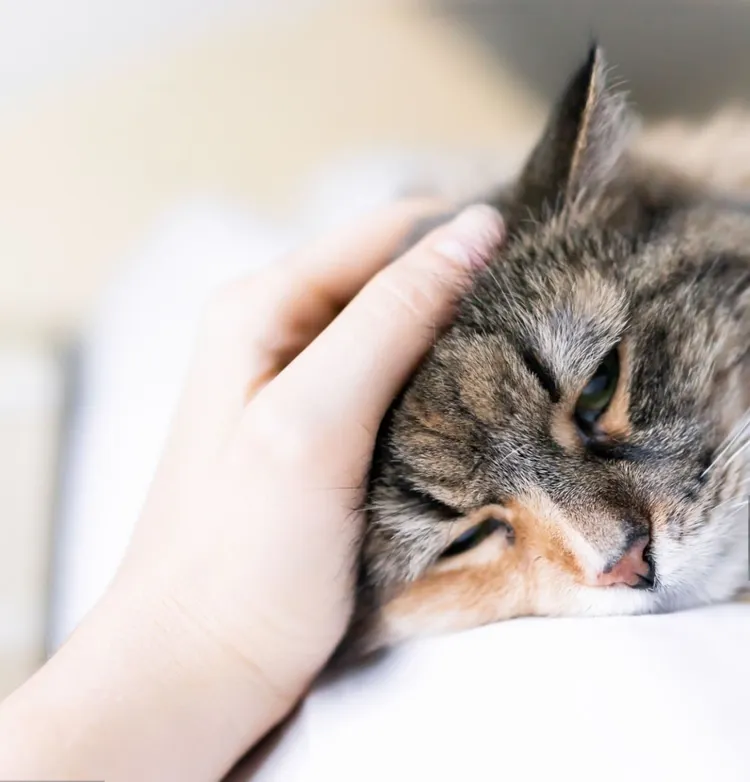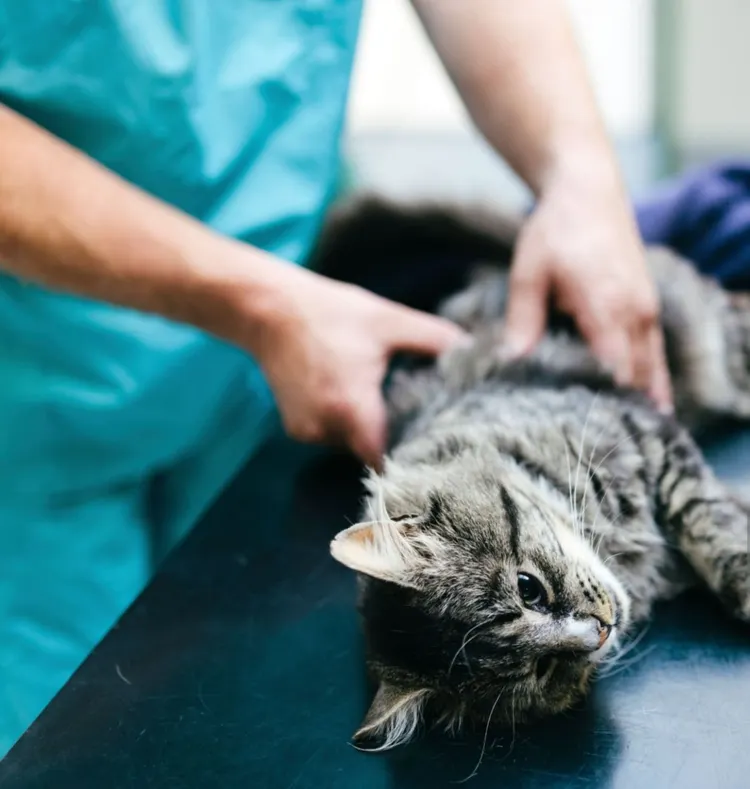Watching your beloved cat reach the end of their life can be one of the most heart-wrenching experiences for a pet owner. Cats are resilient and often hide their pain, making it challenging to recognize when they are in their final stages. As much as we wish our feline friends could be with us forever, understanding the stages a dying cat goes through can help us provide them with comfort and peace during this difficult time. This guide will walk you through the stages a cat may experience as they near the end of their life and provide eco-friendly, compassionate care tips.
Recognizing the Stages of a Dying Cat
When a cat is approaching the end of their life, they often exhibit several physical and behavioral changes. These changes are natural as their body gradually shuts down, but they can be difficult to witness. Being familiar with these stages can help you make your cat’s last days as comfortable as possible.
1. Loss of Interest in Food and Water
One of the first signs that your cat may be nearing the end is a loss of appetite. Cats may start to refuse food and water as their body no longer requires the energy to sustain itself. This happens because their digestive system begins to slow down or shut down altogether. You may notice that your cat:
- Nibbles at food or completely avoids it
- Drinks less water or avoids their water bowl
- Appears to lose weight rapidly
While this can be distressing, it is a natural part of the dying process. In this stage, it’s essential to avoid forcing your cat to eat or drink, as this could cause discomfort.
2. Increased Fatigue and Sleep
As cats near the end of life, they often sleep more and become less active. This is a result of their body conserving energy. You may notice your cat spending more time resting in a favorite spot or curling up in quiet, secluded areas. They may seem less interested in engaging with their surroundings, including playing, exploring, or interacting with you.
In this stage, it’s important to create a peaceful environment where your cat can rest undisturbed. Offering extra soft, sustainable bedding made from organic cotton or wool can provide additional comfort during their final days.
3. Changes in Breathing Patterns
Changes in a cat’s breathing pattern can be a sign that the end is near. Cats may begin to take more shallow breaths, or their breathing may become rapid and irregular. As the body’s systems start to shut down, oxygen levels drop, and these irregular breathing patterns become more noticeable. In some cases, you may hear your cat breathing loudly or panting, indicating they may be uncomfortable or struggling.
When you observe such changes, it’s crucial to remain calm and create a quiet space where your cat can breathe easily. Ensure that your cat has enough ventilation but is not exposed to cold drafts or loud noises.
4. Withdrawal from Humans and Other Animals
Cats may become more withdrawn during their final days, seeking solitude away from family members and other pets. This behavior stems from their natural instinct to hide when they feel vulnerable or weak. You may notice your cat hiding in dark, quiet areas, away from their usual spots.
While it can be hard to see your cat distance themselves, this withdrawal is often their way of coping with the discomfort. Offer them space, but continue to monitor them closely. Make sure they are not isolated in unsafe or cold environments.
5. Physical Deterioration
Physical signs of deterioration become more pronounced as the body shuts down. You may observe significant weight loss, a lack of grooming, and possible incontinence as your cat loses control over bodily functions. Their coat may become matted or dull due to the inability to groom, and they may stop using the litter box.
Offering gentle cleaning with eco-friendly, pet-safe wipes can help maintain their hygiene without causing further discomfort. Use biodegradable wipes or natural grooming sprays made with safe, non-toxic ingredients.

How to Comfort a Dying Cat in an Eco-Friendly Way
As pet owners, we want to make our cat’s final days as comfortable and loving as possible. While this is a deeply personal experience, there are several eco-friendly ways to provide compassionate care that honors both your cat’s needs and the environment.
1. Natural and Sustainable Bedding
Creating a cozy and warm resting area for your cat is essential. Opt for bedding made from natural, sustainable materials such as organic cotton, wool, or recycled fabrics. These materials are gentle on your cat’s skin and environmentally friendly. Avoid synthetic fabrics that may contain harmful chemicals or contribute to plastic waste.
You can also make your own cat bed by repurposing old sweaters or blankets. By using items you already own, you minimize waste while creating a familiar, comforting space for your cat to rest.
2. Holistic Comfort Measures
Many pet owners turn to natural remedies to provide comfort during their cat’s final days. Consider using:
- CBD Oil: Pet-safe CBD oil can help alleviate pain, anxiety, and discomfort in dying cats. Be sure to choose high-quality, organic options to avoid harmful additives.
- Herbal Supplements: Cat-safe herbal remedies, such as chamomile or valerian root, can help promote relaxation and ease anxiety.
- Gentle Massages: Light massages can provide relief for stiff muscles and joints, especially for older cats with arthritis. Use a gentle touch and focus on areas where your cat seems to enjoy being petted.
3. Eco-Friendly Veterinary Visits
In some cases, regular veterinary visits are necessary to ensure your cat is comfortable. Opt for home visits if possible, as this reduces the stress on your cat and limits the environmental impact of driving back and forth to the clinic. If home visits aren’t an option, try to combine veterinary trips with other errands to minimize your carbon footprint.

Making the Right Decision: Euthanasia and Aftercare
There may come a time when you need to make the difficult decision to humanely euthanize your cat. Knowing when it’s time is never easy, but it’s important to prioritize your cat’s comfort and quality of life. Signs that it may be time for euthanasia include:
- Persistent pain that cannot be managed
- Complete loss of appetite or refusal to drink
- Inability to move or frequent collapsing
- Significant distress or discomfort
Eco-Friendly Pet Aftercare
When it comes to saying goodbye to your pet, many eco-conscious aftercare options are available:
- Eco-Friendly Pet Cremation: Some crematoriums offer eco-conscious cremation services that use renewable energy or eco-friendly equipment.
- Biodegradable Burial: If you choose to bury your cat, consider using a biodegradable pet casket made from natural materials such as bamboo, wicker, or cardboard. You can also bury your pet’s ashes in a biodegradable urn that will decompose naturally over time.
Conclusion
Navigating the end-of-life stages with your cat is never easy, but understanding the signs and providing eco-friendly care can offer comfort to both you and your feline friend. By choosing natural, sustainable products and practices, you honor your cat’s life in a way that respects both their needs and the planet. As you care for your cat during their final days, remember that your love and presence are the greatest gifts you can offer.



